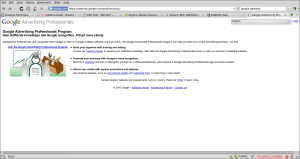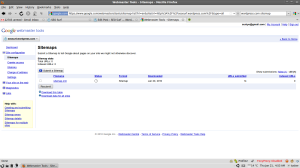So, it is good that finally the title of this blog post has moved your attention from television to something else. When you start learning about search engine optimization and how to implement that on your small website, you get confused and tend to lose focus a bit. It is all some alien talk for you and being a couch potato you are obviously not interested in learning new things that involves lot of reading and on top of that on a computer. So this article is for those lazy people who want to get it all concise and under one hood.
What is SEO?
Search Engine Optimization is both an art and a science packed together. According to SEO industry expert and leading technologist Danny Sullivan phrase “Search Engine Optimization” came to use during 1997. In good old days when spamming was not a big problem Search Engine Algorithms relied heavily on web-master provided data like meta description, meta keywords and index files and sitemaps. Ranking manipulation and abuse forced search engines to change their algorithms to rank ‘good websites’ before bad ones. Nowadays prominence of a website is calculated using complex mathematical algorithms that are not easy to manipulate. Google uses more than 200 factors to give a page-rank to a website and its ranking in search engine results.
What do you need to know about SEO?
When people talk about SEO and SEM they tend to mix things up a bit. Search Engine Optimization is different from Search Engine Marketing in many ways. One method costs you nothing if you intend to do it on your own and the other may cost you money every time someone clicks on your advertisement in search engine results. So what is your goal and why do you need SEO and why it is more preferable than paid Pay-Per-Click SEM programmes?
If you are a true couch potato and doesn’t want to move your lazy ass a bit and still want some good healthy traffic to your website that help you market your product, sell something or just get the traffic for the sake of it, SEO is not for you. PPP programmes offered by Google Adwords may be is the right solution for you but it is not free like SEO and in no way a permanent solution to get more traffic to your website. The day you stop your PPP advertising campaign traffic may reduce pathetically and it also doesn’t get you any long term “link juice” advantages.
Than why do we need SEM?
In some cases SEO can not help you because you can’t get your website on the first page of google or yahoo overnight. When time is more important than money SEM gives you better results compared to SEO. Say for an trade fair website SEO is not necessary at all. Trade Fair is going to run for 3 days and event is just 10 days from now than SEO can’t help you there, and it is also meaning less as website is going to shut down once the event is over. For a politicians election campaign SEM surely is a better solution compared to SEO.
It is also very useful when the return of investment ratio is very high and you are selling some product or service on your website. You are a hosting company and if you spend $50 a day and get 10 registrations worth $50 from that campaign it is better than waiting for SEO done and your website ranking higher than your competitors. When either “Time” or “Return of Investment” is more important than money SEM is right solution for you.

